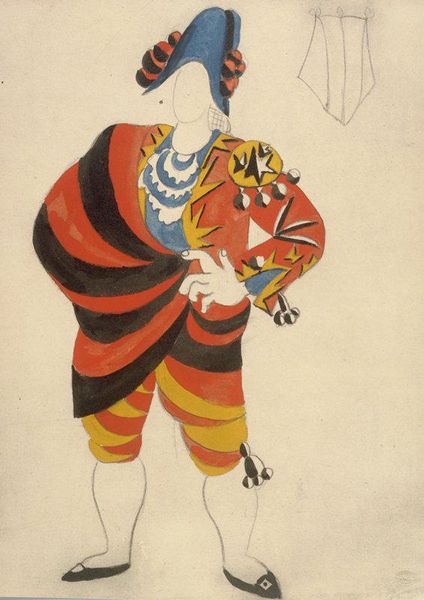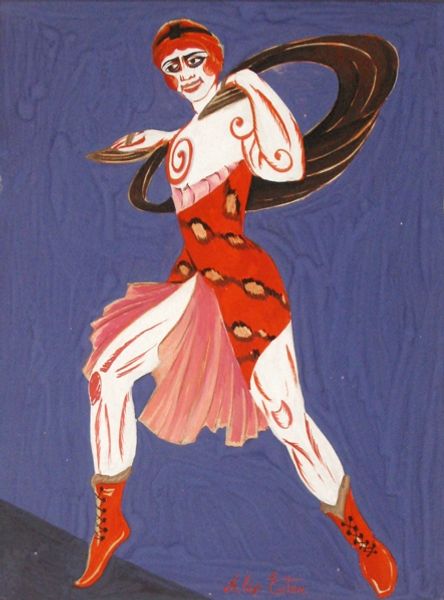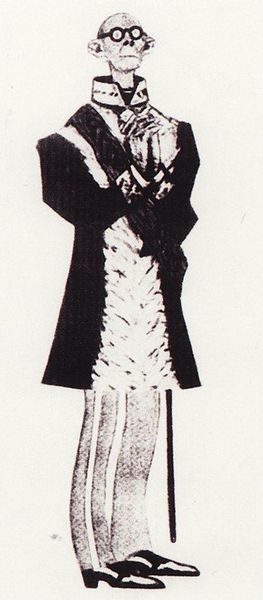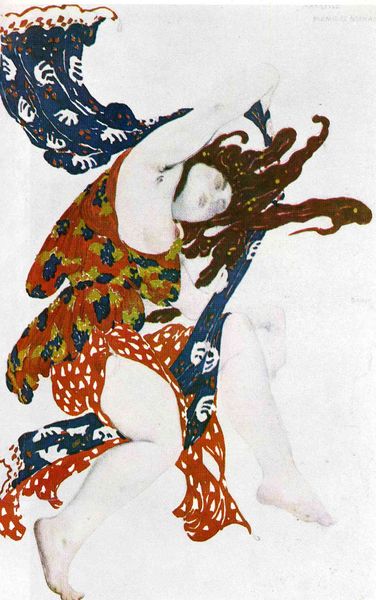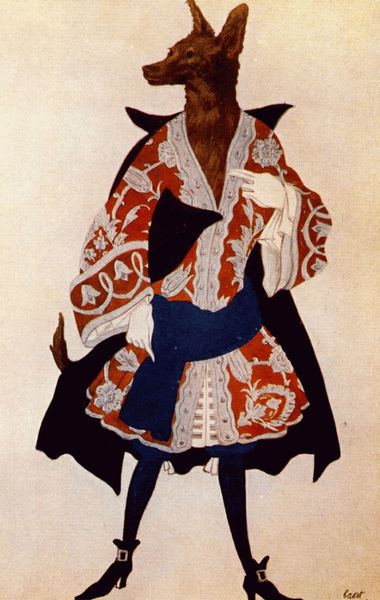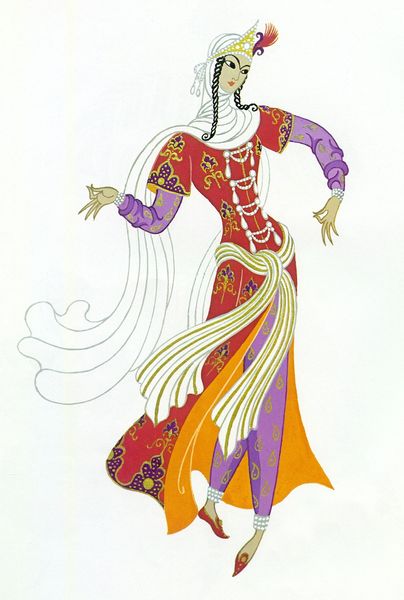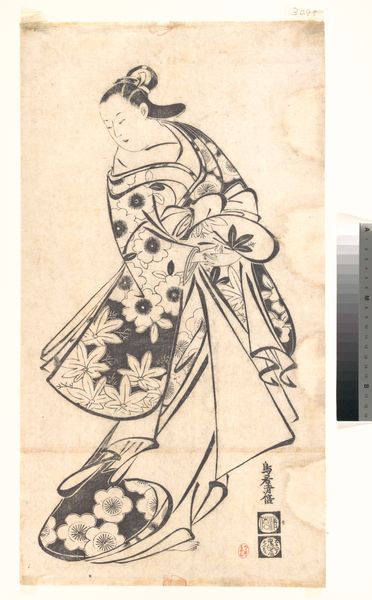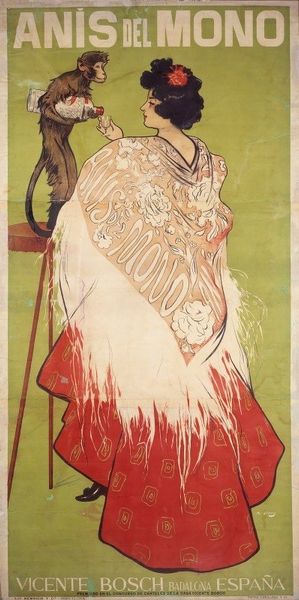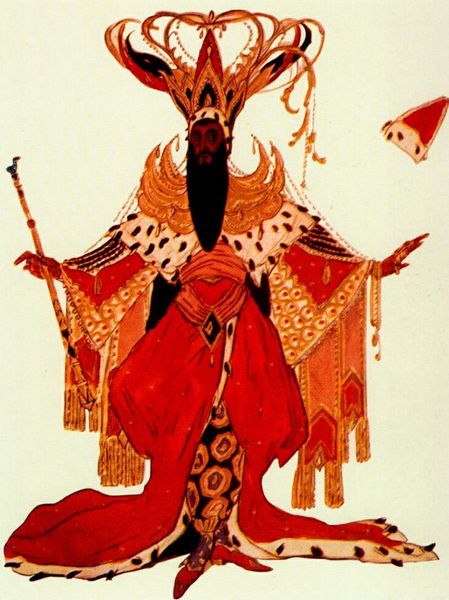
drawing, performance
#
drawing
#
cubism
#
performance
#
figuration
#
costume
Copyright: Public domain US
Curator: Here we have a costume design by Pablo Picasso for the ballet "Le Tricorne," or "The Three-Cornered Hat," dating from 1917. Editor: Oh, that's interesting. My first thought was that it has a disquieting, unsettling quality despite the slightly cartoonish nature. Maybe it's the faceless figure, or the contrasting colors that are both vivid and muddy at the same time? Curator: Precisely. While bright, these are earth tones: ochre, sienna, charcoal...which grounds the initial vibrancy you see. Picasso designed the sets and costumes for "Le Tricorne," which premiered in London. It's important to consider this design within the socio-political context of World War I. The ballet was commissioned by Sergei Diaghilev, and premiered with his Ballets Russes. Editor: Ah, Diaghilev, the great innovator and instigator! So, beyond pure aesthetic design, this work functioned within a cultural nexus: Spanish folk themes, avant-garde art, ballet, high society, all swirling together… You see it too, don't you? The costume feels almost unfinished, like the dancer hasn't quite emerged into full character. There is this gestural quality, as if movement is being suggested, but in reality we just have an image fixed in time. Curator: Indeed, it provides insight into the broader cultural trends, where folk traditions were re-evaluated by the artistic avant-garde in response to larger events, while subtly playing into notions of nationalism and cultural identity. The stage became a vital place for engaging with national and European identity. Editor: To me, though, even divorced from the history, it has its own powerful ambiguity. This strange figure… It invites the viewer to project their own narrative. Maybe that was part of Picasso's intention too? To use costume not just to dress a character but to summon an emotion, an atmosphere. Curator: And to reveal a dialogue with folk traditions… Art seldom exists in a vacuum. Context is paramount, right? I see "Le Tricorne" as a fascinating point where art meets society, mirroring its complexities and sometimes contradictions. Editor: Absolutely! And I find the most captivating art invites that constant reassessment, that push and pull between pure experience and understanding its place within broader social currents. A dance between emotion and intellect.
Comments
No comments
Be the first to comment and join the conversation on the ultimate creative platform.
